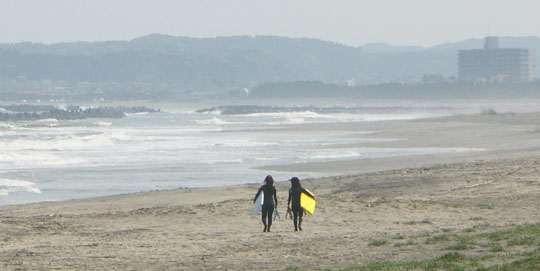If it was thousands of miles from home, I would wistfully think of this as an exotic and special place. It has almost everything I want in a seaside hangout: Empty beaches backed by pine forests, not condos; surfing waves; fishing piers; hilltop viewpoints; and family farms growing corn and watermelons. Then there are the good, cheap restaurants and the many minshuku (family-run guesthouses) — and funky surfers who make it feel like Bali or Hawaii.
But 66-km-long Kujukuri-hama (meaning "Ninety-nine-ri Beach" — using the ancient distance-measure of ri) is less than a two-hour trip from central Tokyo by train or car, being only 60 km at its nearest point from the capital. This means that a good mountain bike or road bike will get you there, too — feeling unwound from the city and ready to lap up the delights of this Pacific shore extending along the east coast of the Boso Peninsula in Chiba Prefecture from Iioka-cho to Misaki-machi.
Yet somehow, Japan's second-longest beach (outdone only by the 115-km Enshu Nada Kaigan that straddles Shizuoka and Aichi prefectures) remains off the tourism radar, though many flights into Narita Airport pass right over it. Certainly, when first arriving here in 1987, I was amazed to see this seemingly endless stretch of golden sand below — but never set foot on it until about 1999.



